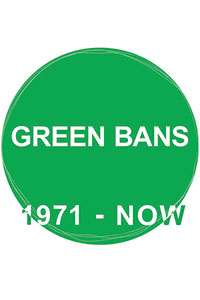Rileys Island, Gosford
In September 1973 a public meeting was held in Gosford to discuss the development of nearby Riley’s Island. The 19-hectare island had been purchased four years earlier by Hooker-Rex estates who announced plans in 1973 to build 300 houses on the site; a plan which was met with momentous opposition from residents. Over 500 people attended the public meeting and they unanimously decided that an immediate stop had to be put to project. Environmentalists, biologists, fisherman, and nature lovers alike protested strongly as the development would have irreparable ecological damage on the area; it would destroy the natural fish nursery around the island, threaten bird life and extinguish the natural beauty of the island. Residents had seen the impacts of a similar development on the adjacent St Hubert’s Island and were desperate to see Riley’s Island saved and kept as a nature reserve.
The Gosford Shire Council was on the same page as residents, unanimously agreeing to approach the State Government and request they purchase the land from the developer. Despite this, Hooker-Rex insisted on moving forward with development and began bulldozing the island. Realising that all current actions were futile, the Central Coast Environmental Protection Society reached out to the BLF. BLF organiser Tony O’Beirne and executive member Bill Holley were accompanied by members of the society on an investigative visit to the mangrove island and the subsequent report resulted in the placement of a green ban the site. According to the BLF, Riley’s Island served an important aesthetic role in an area of heavy development activity, and more importantly, it was the most ecologically significant area in the waterway and the whole system could degrade rapidly if development were to go ahead.
References
Verity and Meredith Burgmann, Green bans, red union: the saving of a city, 1998.
Research provided by Isabella Maher

